This Freemasonry Art Is Riddled With Symbolism — Try Finding Some
Edition #9 - Alphonse Mucha’s journey from commercial to spiritual art
Hello readers. Welcome to the 9th edition of my newsletter—Pursuit. If you are new here, please subscribe to my newsletter for exclusive stories on art and symbolism.
Last week, I wrapped up my first free mentorship program. There were 5 participants, 4 of them are working full-time. All, have a single goal — to start a side hustle and eventually monetize from it.
I’d open this free program again in the last week of February. If you’re interested, feel free to comment below.
In today’s edition, let’s deep dive into the fascinating art of Bohemian artist Alphonse Mucha and how he transformed his commercial art into a spiritual one.
Are you familiar with the charismatic portraits of women or femme fatales by Mucha in 19th century Paris?
Do you know that Alphonse Mucha was the father of the Art Nouveau period?
If not, keep reading.
Art Nouveau was a period that began around the 1880s when visually decorative art style and pastels became popular amongst the artists.
Mucha adopted this art category, poured his creativity, and voila, his trademark style was born — gorgeous women with sensual looks, long hair tendrils and an intense gaze posed against the colorful pastels and botanical backdrops.
Mucha’s artistic career took a 360 degree turn when he met the popular French stage actress Sarah Bernhardt. When Sarah commissioned Mucha to design a poster for Gismonda, a Greek melodrama, he sealed the deal.
The poster was larger than life portrayal of Sarah with an exquisite embroidered gown, floral stole and a dramatic orchid headdress. The rainbow-shaped arch behind her head, almost like a halo, endorsed divinity.
This poster created a sensation in the Paris art group and became pivotal in Mucha’s career. Later, he was offered a plethora of well-known advertisements and illustration projects.
Mucha’s women had ethereal charms and communicated the desirability of a product, for example, a cigarette.
But there came a time when Mucha was dissatisfied with these commercial commissions and longed for a project with a more elevated mission.
This ‘spiritual epiphany’ became the next pivotal moment in his career and Le Pater was born.
Le Pater — Mucha’s symbolist masterpiece
Mucha was inspired by Paris's spiritual climate and two years before Le Pater's launch, he joined the Paris masonic group.
Le Pater was an illustrated edition of The Lord’s Prayer. This book is filled with mysticism and masonic symbolism.
The cover page represents a sensual woman. A feminine deity. But hey, wait. If we look closely around the collar bones and arms, it looks masculine. So, is it an androgynous deity?
The symbols at the extreme left are all masonic symbols. Here are the ones I could identify. (Let me know in the comments if you could identify others)
Eye of Providence — that depicts an eye enclosed in a triangle. It is surrounded by the rays of light, meant to represent divine providence, whereby the eye of God watches over humanity.
Serpent — it is the symbol of the Universal Savior who redeems the world by giving creation the knowledge of itself [the doctrine of self-awareness for man’s divinity] and the realization of good and evil.
As we flip through the pages of Le Pater, a feminine deity tries to protect humankind.
The thought of a woman protecting mankind in itself is surreal. Isn’t it?
Lastly
Mucha freemasonry was an outcome of his spiritualism — the pursuit of deeper truth beyond the visible world. Mucha believed that three virtues — Beauty, Truth and Love are the cornerstones of humanity. He felt his art was a medium to contribute towards the improvement and progress of mankind.
Mucha’s representation of God as feminine and androgynous showed his progressive mindset.
Mucha’s envisioned God beyond gender.
Le Pater is regarded to be Mucha’s finest work.

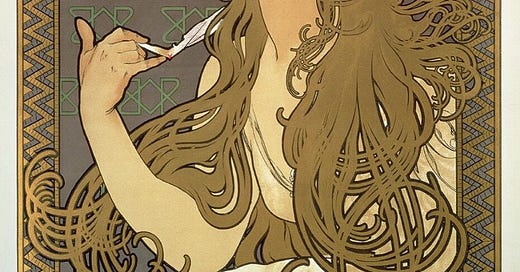




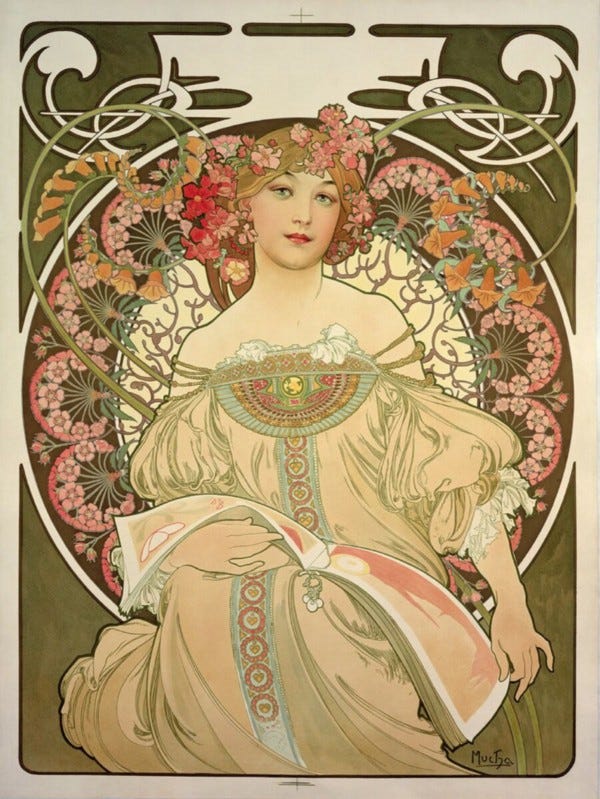
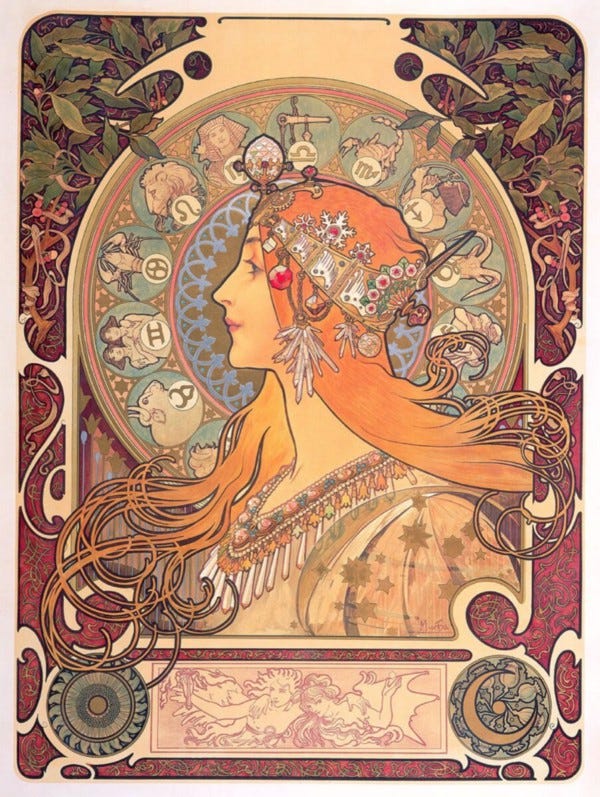
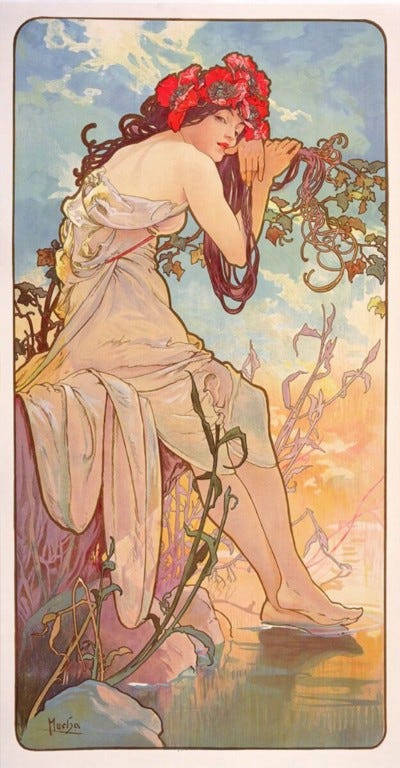
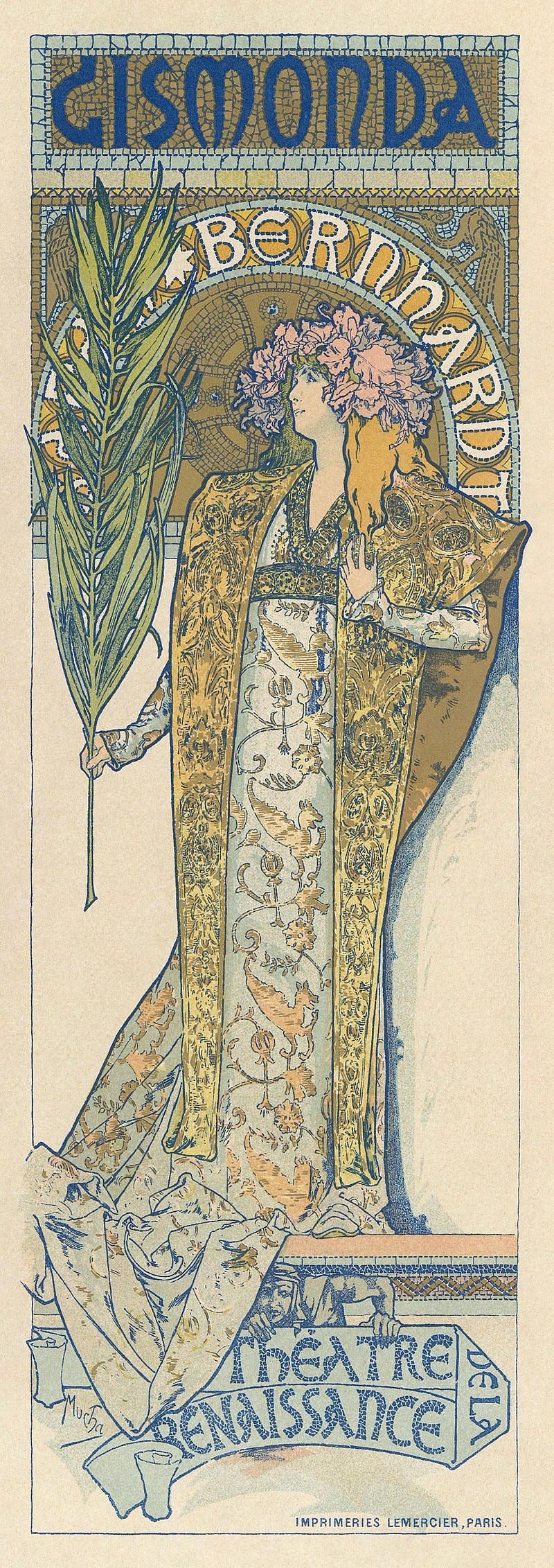


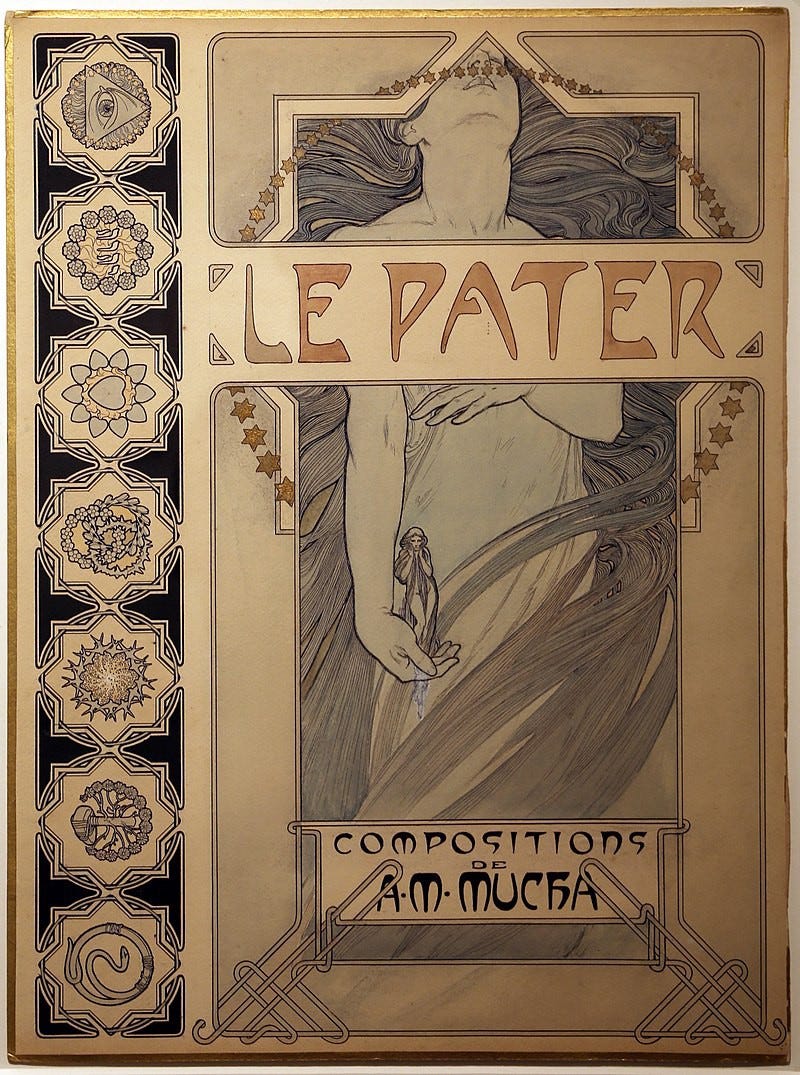
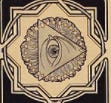

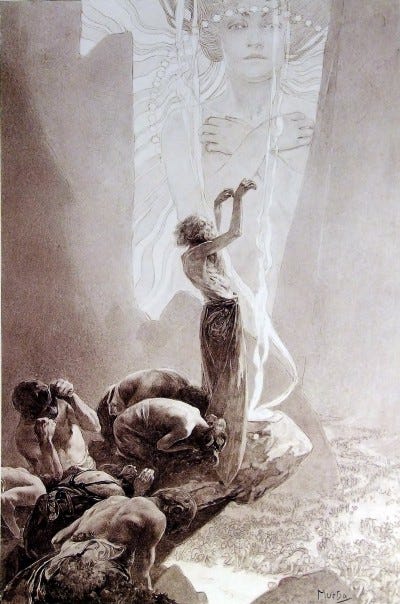
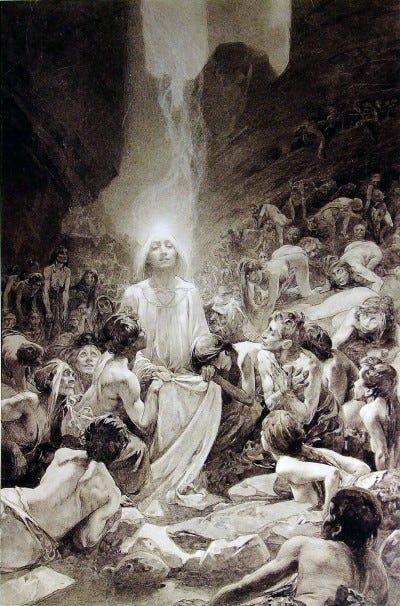
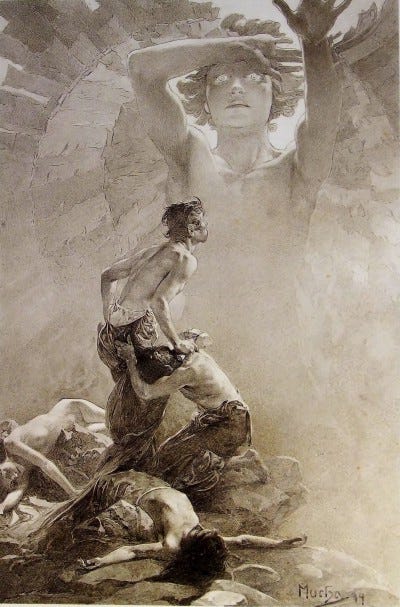

Interesting that his diety became feminine in nature. As I was looking through these paintings I kept thinking of them as Tarot cards - and wondering what I would see in them if I imagined them that way.
So cool! I’ve never heard of this artists before. Thanks for sharing.